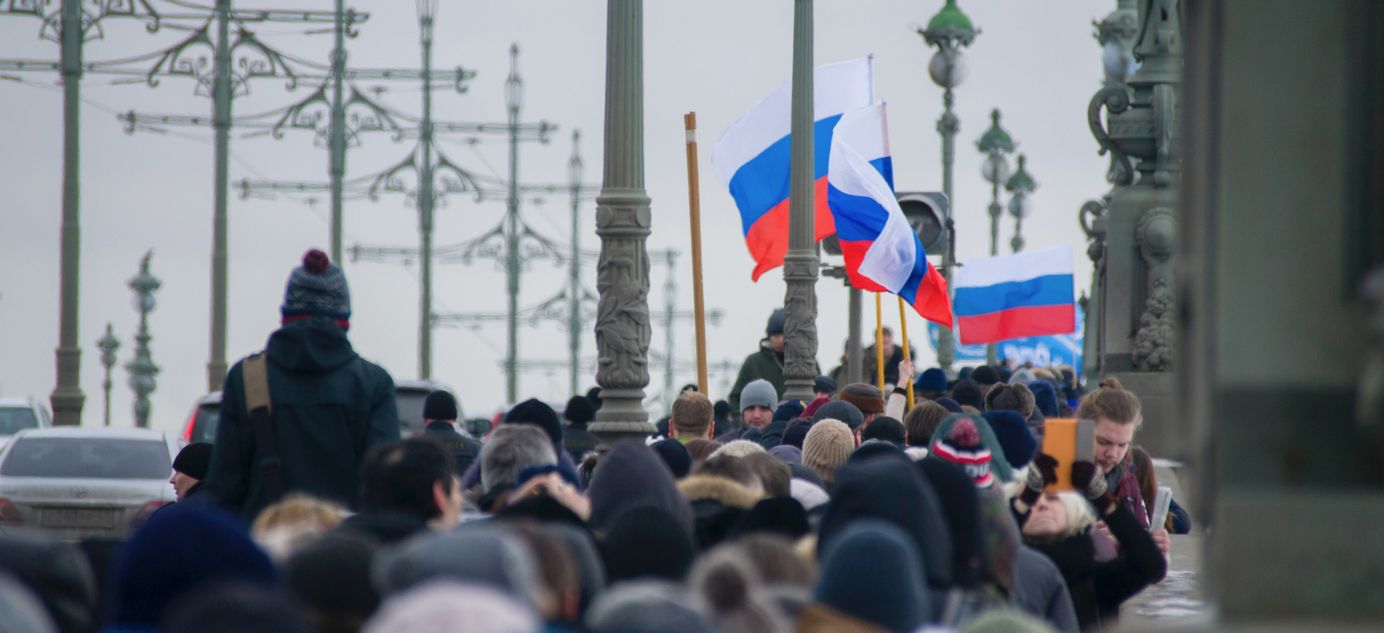
4 months of sanctions
Hello! This week we look at the effect of sanctions on Russia as the war in Ukraine enters its fifth month. In the West, there are concerns about the effectiveness of sanctions: they have not prevented Moscow from raking in record foreign currency earnings from the sale of energy resources and they threaten the West, especially Europe, with a whole range of unpleasant political and economic consequences. What have Western sanctions achieved?
Increased energy export profits
Restrictions on Russian energy exports were agreed with difficulty by Western countries and threaten serious domestic problems. But these painful measures are a long way from achieving their goal: in fact, their ineffectiveness has become the main argument against sanctions.
“Russia’s situation, from the point of view of revenue at the current stage of the war, is better than at the start,” the FT quoted Republican senator Ron Johnson as saying earlier this month. And it’s hard to argue. Russia’s revenues from oil and gas are only increasing and, according to Bloomberg, are on course to hit an all-time record of $285 billion this year. Russia’s official figures show that oil and gas revenues were up 45 percent year-on-year between January and May, from 3,129 trillion rubles to 5,658 trillion rubles. The head of state-owned gas giant Gazprom Alexei Miller told the St. Petersburg International Economic Forum that he’s “not upset about Europe”. The European Union has reduced imports of Russian gas “by several dozen percent,” he said, but prices have risen “several times over.”
There are several unique reasons why the Kremlin has been able to earn these record revenues in recent months. One fundamental reason will fade with time, but it is far from certain that the other reasons will go away any time soon.
The first reason is the timetable for Europe’s oil embargo that is intended to limit Russia’s foreign earnings. The embargo, which will halt 90 percent of Europe’s imports of Russian oil, will not come into full force until 2023. As a result, the markets have already priced in future supply cuts. Until then, though, Europe continues to buy Russian oil.
Russia’s oil production is recovering after a slump in March and April. Deputy Prime Minister Alexander Novak said earlier this month that it would reach pre-war levels of 10.2 million barrels a day by the end of June – and that numbers would keep rising through July. In the first 100 days of the war, Russia earned €93 billion ($98 billion) from energy exports (61 percent went to the EU). Of that, €59 billion was from oil and oil products, €24 billion from pipeline gas, €5.1 billion from liquefied natural gas (LNG) and €4.8 billion from coal.
By early 2023, the impact of the European oil embargo should be felt. The International Energy Agency (IEA) predicts that, by then, Russian output will have fallen by 3 million barrels a day however, (immediately after the start of the war, the IEA said this would happen in April).
A pivot to the east?
At the height of market uncertainty in the spring, it seemed that Russia’s obvious and only way out – increased energy exports to Asia – might not be possible to achieve. Now, however, it’s clear that Asia’s leading consumers – China and India – are ready to buy much more Russian oil, albeit at discounts of up to 30 percent.
The data shows that lost sales to Europe have been almost entirely compensated by sales to Asia. Indian refineries even postponed scheduled annual renovations in order to process more cut-price Russian oil. After refining, it is almost impossible to distinguish between Russian oil and oil from other sources if it is returned to the international market.
Based on the averages between March and May, India’s imports of Russian crude are up 658 percent compared with last year. China’s imports are up 205 percent. Across Asia as a whole the figure is 347 percent, according to Rystad Energy. “Asia has saved Russia’s oil revenues,” Kpler analyst Viktor Katona told the New York Times.
Discounts on Russian crude oil will likely remain in order to guarantee Asian clients a significant refining margin and compensate for sanctions-related insurance and freighting costs, according to Wei Chong Ho, vice president for refining at Rystad Energy. But even allowing for this discount, prices are up. Russian figures for January through May show sales at an average of $83.48 per barrel, compared with $61.62 for the same period last year. The average price of Brent crude in the same period was around $104 per barrel.
The Russian authorities classified foreign trade statistics in April. However, Dmitry Polevoy, investment director at Loko Invest, estimates that Russia’s export earnings are up 40 percent year on year (he’s basing this on data from the country’s key trading partners). Deliveries to Turkey, China, India and Brazil are increasing the most rapidly, Polevoy said.
Even with a redirection of supplies to Asia, limits on energy exports to Europe will lead to a fall in production volumes in Russia, according to Dmitry Kulikov, chief economist at Russian credit rating firm ACRA. And the demand for Russian oil – and oil prices – will depend, above all, the state of the world economy: if there is a recession then oil prices will likely drop rapidly. This could lead to problems for Russian energy exports.
G7 countries are currently discussing a cap on the price of Russian oil on international markets. That could end the vicious circle in which falls in Russian export volumes push up global prices – in other words, Russia’s energy revenues are preserved at the cost of consumers in the West. However, reaching agreement on this will be no less challenging than signing off on the EU’s Russian oil embargo.
Tech under threat
There is far less of a debate about the effectiveness of sanctions on selling to Russia. The block on the sale of Western technologies, raw materials and components – coupled with the voluntary exodus of Western companies from the Russian market – has caused a collapse in Russian imports. At their lowest point, imports were down almost 50 percent year-on-year before stabilizing at about 44 percent in May, according to Polevoy’s estimates. Imports from Germany were down 58.7 percent year-on-year in March; from France they were down 60.4 percent and from the U.S. they dropped 78.8 percent.
Countries formally branded as “unfriendly” by the Russian authorities accounted for about 45 percent of trade last year, ratings agency ACRA pointed out in its latest report on sanctions. And this has disproportionately affected some sectors: in May, for example, auto sales in Russia plummeted 83.5 percent. According to ACRA, imports could drop up to 30 percent in value terms by the end of the year. Russia urgently needs to find new suppliers of components, services and licensed software, rebuild its supply chains and figure out a way to make payments without the risk of secondary sanctions for partners, ACRA said.
Thus far, there is no evidence of imports recovering. That’s illustrated most clearly by the ruble exchange rate, which is about 50 to the U.S. dollar. Despite the absence of any economic reasons to strengthen, the Russian currency remains highly valued. On the one hand, this calms price rises in the country (as of June 10, annual inflation eased slightly to 16.7 percent – from 17.1 percent in May); on the other hand, it has already led to three weeks of deflation. The future exchange rate will continue to depend on external barriers to trade, according to ACRA’s Kulikov.
Restrictions on tech imports will hamper productivity in Russia: some activities will simply become impossible (such as producing microprocessors), and a significant amount of investment will go on finding equivalent technologies not subject to sanctions, rather than increasing efficiency. Technological isolation means that there will be a reliance on old technology, in effect causing what Central Bank analysts characterize as “reverse industrialization.” What that means in practice is that lower quality products will go to market at higher prices than their imported competitors.
The impact of import restrictions could be long-term and pronounced, according to Kulikov, particularly when you look at the history of sanctions against regimes in Iran, Venezuela and South Africa. Tech isolation in general, and reverse industrialization in particular, will lead to reduced quality of life for Russians: equipment, vehicles, construction materials, and even milk in Tetra Paks could become too expensive for ordinary Russians.
How the U.S. views the effectiveness of sanctions
The issue of whether sanctions work as a foreign policy tool have been under discussion in the U.S. for decades. The general opinion is that they are not as effective as they might seem. Research by economists at Drexel University suggests sanctions only force the hoped-for policy changes in the target country in 35 percent of cases. Dartmouth professor Robert Pape argued in 1997 that this only happens in 5 percent of cases.
Political analyst Daniel Dresner formulated a paradox back in 1999: moderate sanctions against friendly countries are far more effective than harsh sanctions against ideological opponents. U.S. pressure on France and Great Britain during the Suez Crisis of the 1950s is generally regarded as an example of the former, while the measures against Iran, North Korea and Venezuela, despite huge economic damage, have had little or no effect on the political leadership of these countries over the course of several decades.
The debate about whether sanctions can influence Moscow’s decision-making raged long before the start of the war, and the architects of the current measures have a sober view of their capabilities when speaking on the record.
“If we are dealing with an autocrat like Putin, who has a high pain threshold and confidently controls the information sphere in his country, we need to be clear that sanctions will never solve the problem by themselves,” Biden’s deputy national security advisor Deepak Singh said in April. “We understand that even a blow as powerful as the one we have already dealt will take time to change Putin’s strategic calculations. But we are betting that, in time, he will come to understand that [continuing the war] will be a strategic reverse.”
But halting the war in Ukraine is not the only goal of these sanctions: the long-term impact on the Russian economy should prevent Moscow from pursuing an expansionist agenda in other countries and, at the same time, be a deterrent to other nations.
Why the world should care
Debates and doubts over the effectiveness of sanctions, which existed long before the current crisis, did not discourage the U.S.from introducing them against a country of Russia’s size and importance, nor did they dissuade the EU from supporting them. If the war in Ukraine does not end in the foreseeable future, sanctions will only get tougher. Whether they can stop the war is open to question, but there is no doubt that they can put permanent limits on Russian economic growth.




